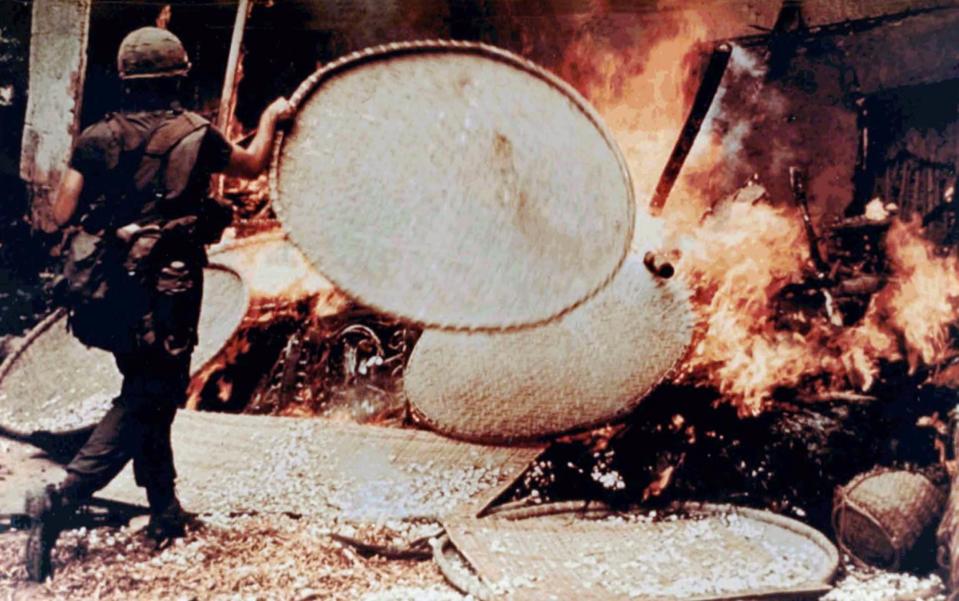William Calley, who during the Vietnam War led his US Army platoon into the Vietnamese hamlet of My Lai and carried out one of the worst war crimes in American military history, has died aged 80.
The Washington Post on Monday first reported Calley’s death, which happened in April, according to a death certificate the newspaper cited. The New York Times, citing Social Security Administration death records, also reported Calley’s death.
Neither paper gave a cause of death. Calls to numbers listed for Calley’s son, William L. Calley III, were not returned, Reuters reported.
American soldiers killed 504 people on March 16, 1968, in Son My, a collection of hamlets between the central Vietnamese coast and a ridge of misty mountains, in an incident known in the West as the My Lai Massacre. The killings shocked the US and galvanised the anti-war movement.


Initially charged in a US Army court martial for 102 deaths, Calley was sentenced to life in prison in 1971 for the killing of 22 civilians. He was behind bars for only three days before then-President Richard Nixon ordered he be released under house arrest.
Despite being told that My Lai was a hotbed of communist National Liberation Front guerrillas, US forces met no serious armed resistance and found very few weapons, according to the Army Historical Foundation.
Four soldiers were brought up on charges stemming from the massacre but only Calley was convicted.
Calley spent three years in home detention at his apartment in Fort Benning, Georgia, where he had visits from his girlfriend, and was then paroled and cashiered out of the Army.
Maintaining that he had merely followed orders and considering himself a scapegoat, Calley became a lightning rod for a country bitterly divided over the unpopular Vietnam War.


In later years, as a successful businessman in Columbus, Georgia, Calley refused to talk about My Lai with reporters or historians.
Friends, however, said he admitted committing the deeds he was charged with and had learned to live with it. In 2009, he made his first public apology.
“There is not a day that goes by that I do not feel remorse for what happened that day in My Lai,” Calley told a Kiwanis Club in Columbus, Ohio.
“I feel remorse for the Vietnamese who were killed, for their families, for the American soldiers involved and their families. I am very sorry.”
William Laws Calley Jr was born on June 8, 1943, the only son and fourth child of a Miami businessman. He attended four high schools in four years, two of them military academies. After he dropped out of junior college, he worked as a bellhop, dishwasher, insurance investigator and train conductor.
Broke in Albuquerque, New Mexico, in 1966, he joined the Army and excelled. Despite a poor academic record, Calley graduated from Officers’ Candidate School at Fort Benning one year to the day before the My Lai incident.
After his discharge from the Army, Calley married Penny Vick in 1976 and went to work for her father in the jewellery business in Georgia, becoming a certified gemologist. They had one son and later divorced.
Broaden your horizons with award-winning British journalism. Try The Telegraph free for 3 months with unlimited access to our award-winning website, exclusive app, money-saving offers and more.
